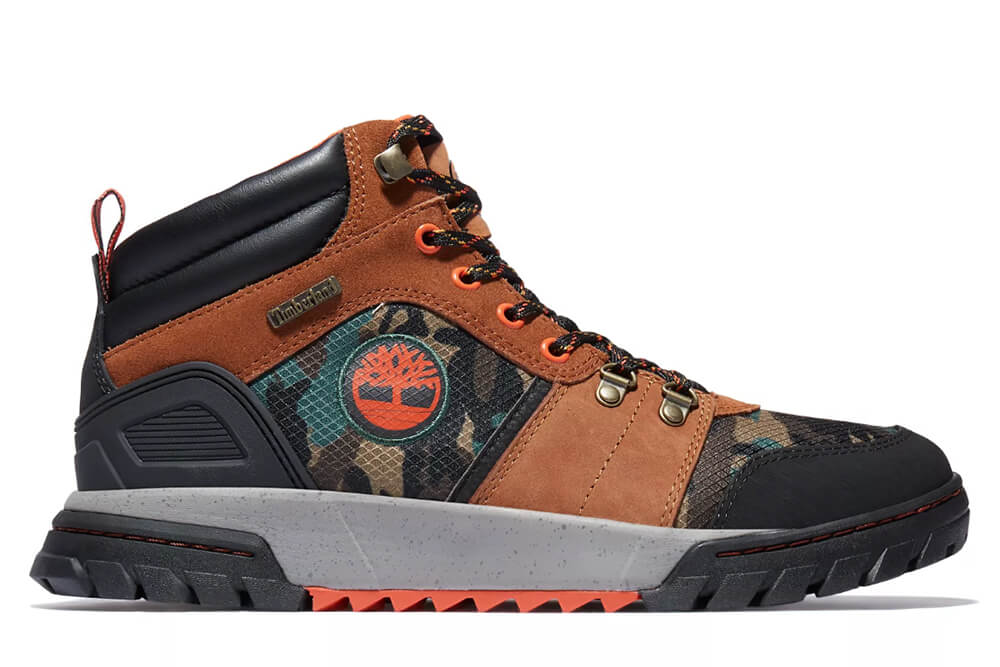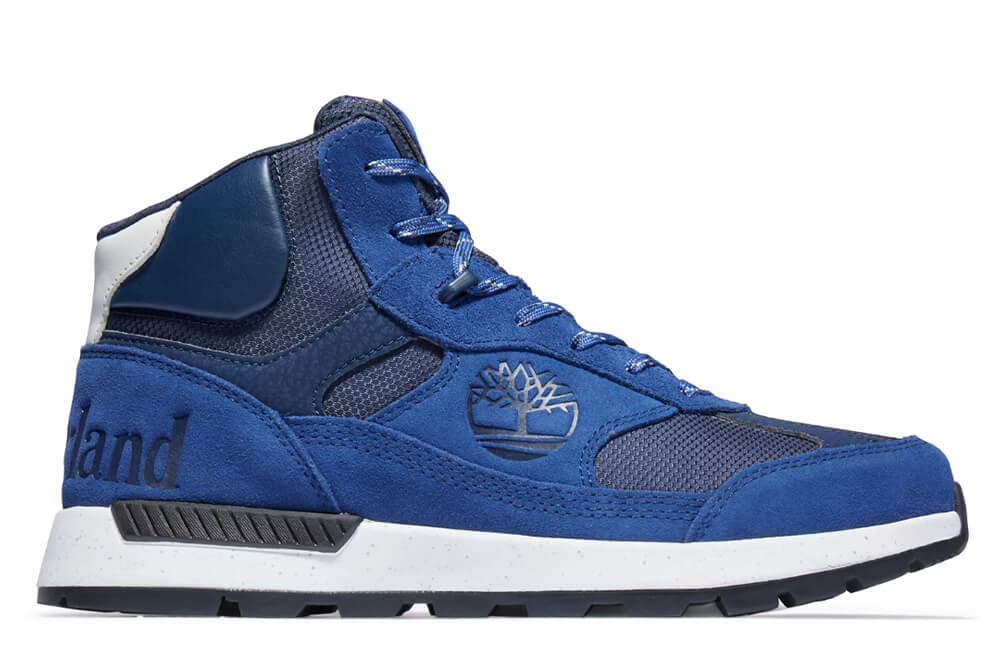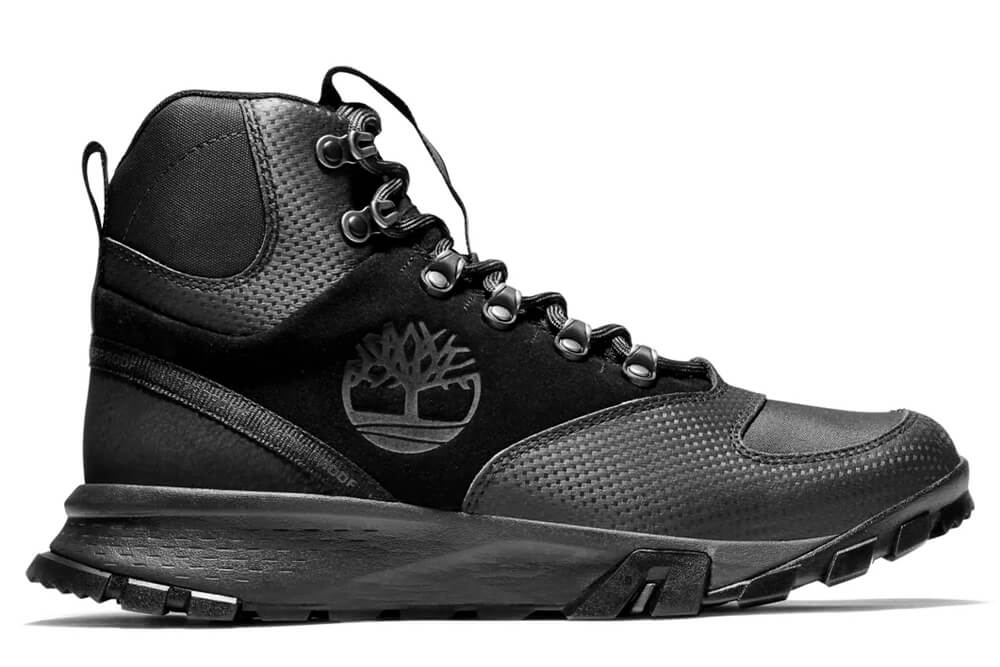In full disclosure, I have for many years hiked in Converse. Yes, it’s something outside the box, and I did so at the time as a cash-strapped university student, but it worked out fine during my many hikes.
I truly adored my navy denim Converses back then and still consider them in my top five shoes for any occasion. So, to set the record straight, it’s perfectly fine to go hiking in Converse boots with a few caveats.
This article will lay out the reasons for and against Converse being (or not) good to hike in and share a story on a hiker who successfully conquered the terrain in Chuck Taylor’s.
Why Converse Chuck Taylor All-Stars are good for hiking
- First, do yourself a favor and google ‘Converse Gatewood.’ The first results will show the Elderly Grandma Gatewood, who in the 1950s was the first female to solo hike the Appalachian Trail in futuristic vibe style using a pair of Converse.
- Converse are relatively cheap, costing roughly $50 – $100 compared to a $200 hiking boot. If you have Chucks already, at least you won’t need to go out and buy hiking boots, right…?
- Tightly laced up, they will provide a decent amount of stability, and their rubber sole can provide solid traction in dry conditions.
- You’re going to get good airflow so your feet breathe when hiking in Converse Chuck Taylor All-Stars. Lined with natural cotton fabric and a canvas outer, Chucks also have perforated vents in the arch support.
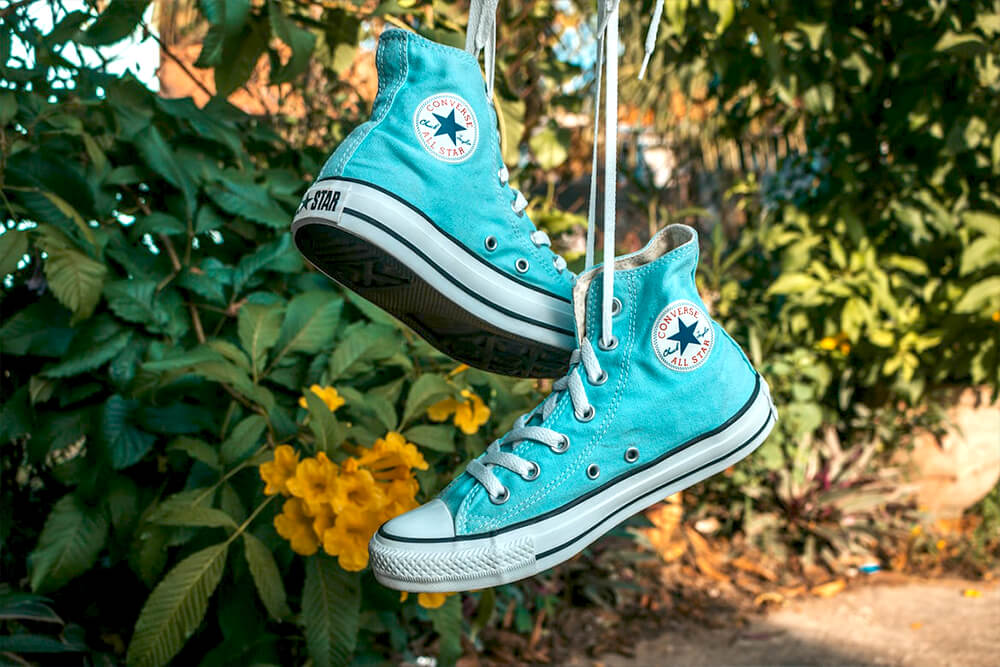
Why Converse Chuck Taylor All-Stars are not good hiking shoes
As best as I’ve tried to provide the positives of hiking in Converse boots. The truth is there are more points to argue that Converse shoes perform atrociously on whole summer long hikes. I can attest to this, having tried out all kinds of hiking boots and brands.
- The Converse All-Stars were made as basketball shoes. A basketball court is a grippy, dust-free smooth surface that gets mopped up by a paid individual as soon as any moisture touches the court. This is the total opposite environment of what a backcountry trail is.
- The technology has not caught up. There is no seamless stitching, no orthopedic insole or cross directional traction lugs, or reinforced support shafts that are standard in hiking boots. The Chucks have not changed in design since the 1920s.
- The ankle patch and canvas heel counter provide minimal ankle support, and it’s pretty standard for everyday users to roll their ankles on suburban pathways, let alone trail conditions.
- You can tightly lace your converse to provide some support, as mentioned above. By doing so, you risk circulation issues and an ill-fitting shoe, which invites pressure and friction blisters.
- The shallow diamond tread pattern of the Converse Chuck Taylor’s are sparingly positioned, and once the rain sets in, you’re going to slide all over the place.
- The canvas outer provides zero waterproofing to add to a slippery shoe. It’s a disaster in wet conditions.

Tips to keep in mind when hiking in Converse
- Seek an insole at your local pharmacist. A cheap insole can provide an extra half-centimeter of height, but it can also be just enough to protect your feet should a sharp object penetrate the Converse sole.
- If you’re struggling to get a tight fit for hiking, you can always look at adding a thicker sock liner. There are sock liners for every occasion and weather condition. Thick Merino socks work great for cold climates, while sport sock liners excel in sweat-wicking and blister minimization.
- Get up to speed on the trail and environment by going out for shorter hikes with your Converse’s. Slowly build up the miles and note what types of trails your feet feel good on when wearing the All-Stars.
- Use boot covers or use a canvas-friendly waterproofing application on your classic chucks. Test any chemicals out on an old throw-away shoe before putting them on your Converse. But these solutions will improve the boot’s performance if the rain sets in.
What Are Converse Chuck Taylor All-Stars
The proposed hiking boot this article will focus on is the Chuck Taylor All-Stars.
The Converse Chucks feature a stitched upper that is worked into a white rubber toe guard. The brown rubber sole is relatively modest compared to today’s cushioning technologies, your React™, Flytefoam’s™, Pureboost’s™, etc.
But it’s the simple cotton canvas outer with the carefully stitched iconic Converse logo that has made this shoe so recognizable and timeless amongst consumers.
These design aspects have remained mainly unaltered since the first version of the boot was introduced in the 1920s.

Questions and considerations
What weather can I hike with Converse?
Simply put, Converse Chuck Taylors should only be worn during ideal hiking conditions. So you’re looking at dry flat conditions, maybe a slight drizzle with minimal elevation, you’re good to go. Anything other than that, like a mountain terrain or heavy downfall, then for your safety, leave the high top Converse for a better day.
Can I hike with Converse in the snow?
If you’re going on a short hike on a relatively flat surface while it’s snowing, then hiking in Converse should be okay. Just consider the lack of waterproofing your boots have, and soon sleet and down will dampen your classic Chucks, and you may want to reconsider.
My Rock climber friend swears by Converse
Converse All-Star’s are great for many occasions. For example, I’ve recently come back from a fishing trip on them. Of course, I had to be super careful not to slip overboard, but that goes to show you the many use cases for them.
However, just because the light, grippy converse can perform well in perfect indoor rock climbing conditions doesn’t mean they will excel on a rough and rugged mountain that has just been hit with a dust storm.
If you decide to put your Converse through the wringer, make sure to test them out on short hikes first.
What boots do you suggest for hiking instead of Converse?
Converse has released ‘hiker’ models such as the ‘All-Star Hiker Boot Hi’ and the ‘Run Star Hike.’ But on closer inspection, the only relation to hiking is that they have the word ‘Hike’ in the product title.
For example, the ‘All-Star Hiker Boot Hi’ provides a leather outer that improves water resistance, but it counters this by having a sheepskin inner lining, which will take on water.
It also features a more pronounced chunkier tread, but it doe not improve on heel and ankle support, so the likelihood of rolling your ankle due to the extra traction is higher.
Timberland hiking boots are a great alternative
As mentioned in our thorough article on why Timberland boots are good for hiking, the brand itself faced the same dilemma as Converse.
The main difference is that Timberland is recognized globally as a fashion brand, but its roots originated as an outdoor adventure company.
Because of its recent move towards fashion but still tapping into its blue-collared origins, Timberland hiking boots are aesthetically appealing yet feature everything that you would need in a high-end hiking boot. Timberland models like the Garrison, Field Trekker, the Treeline, and the Boulder all come to mind.
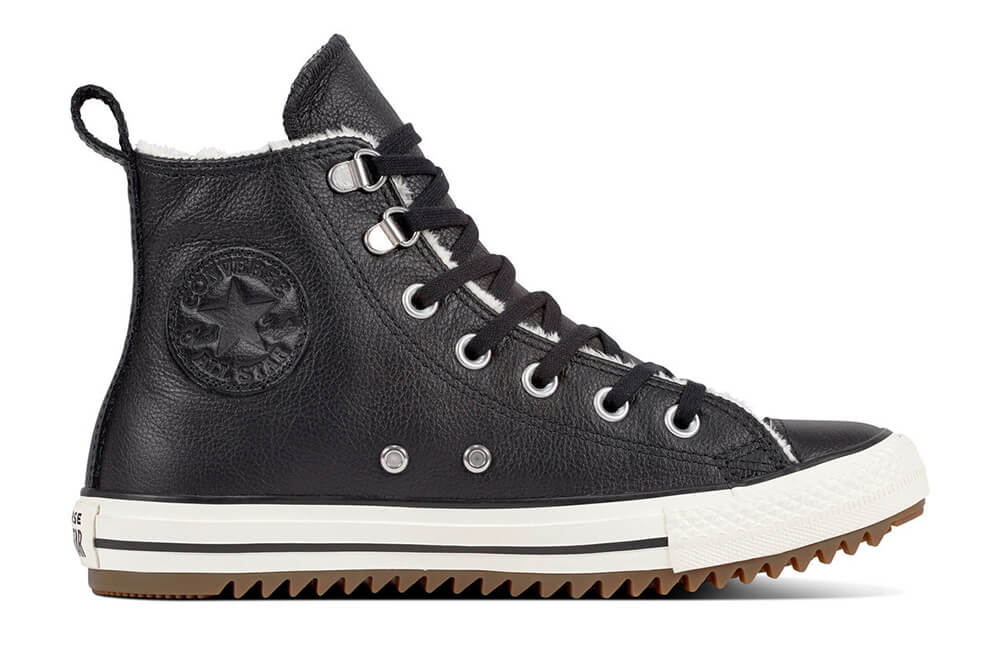
Conclusion is it okay to go hiking in Converse
If the conditions are friendly and you know what type of trail you’re dealing with, you may even have backups. Then yes, it is okay to go hiking in Chuck Taylor All-Stars boots.
I have done so for many hiking sessions, but this was way before I was able to experience a strictly focussed, fully kitted, and dedicated hiking boot.
Being able to compare my current Timberland Chocorua Trail’s to my Converse Chucks when it comes to hiking is like comparing a Ferrari to a Toyota Camry on a racing circuit. There is no comparison.
If you decide to go hiking with your Converse, consider the extra precautions mentioned in this article and go slow. And more importantly, enjoy yourself out there in the backcountry.

